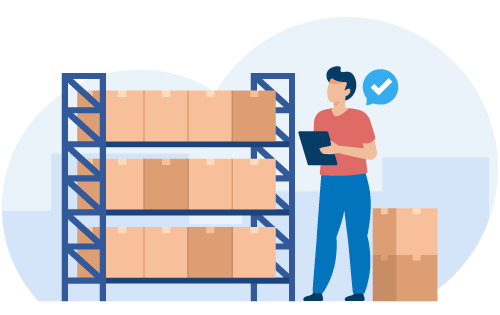From Flexibility to Growth: The Power of Operational Agility
Built For



From Flexibility to Growth: The Power of Operational Agility
Adaptability is a necessity in today’s business environment.
Think of operational agility as the bridge between flexibility and sustainable growth. Operational agility is a business’ ability to pivot quickly, adapt to changes, and capitalize on opportunities—all without losing momentum. Businesses that master operational agility aren’t just reactive; they’re proactive, staying ahead of challenges and meeting customer expectations with ease.
Why Operational Agility Matters
Responding to Market Changes
Markets are unpredictable. Businesses must adapt quickly, whether it’s a sudden shift in consumer demand, supply chain disruptions, or economic downturns. Operational agility ensures you’re not caught off guard, allowing you to pivot strategies and keep operations running smoothly.
Meeting Customer Expectations
Customers value speed, accuracy, and reliability. An agile business can meet these expectations by adapting its processes to handle changes in order volume, delivery timelines, or product offerings. Happy customers mean loyal customers—a win for your bottom line.
Driving Innovation
Operational agility isn’t just about reacting to change; it’s about embracing it. When your business is agile, you’re better equipped to experiment with new ideas, test innovative products, and explore untapped markets. This approach fosters creativity and positions your business as a leader, not a follower.
Components of Operational Agility

Achieving operational agility isn’t about making one big change—it’s about building a foundation of practices and tools that allow your business to respond and adapt seamlessly. Let’s look at three critical components that make this possible.
Flexible Processes
Imagine running a furniture manufacturing business during the holiday season. Demand for specific items, like dining tables, skyrockets while other products, such as outdoor furniture, slow down. Without flexible processes, this surge could leave you scrambling, with overstocked warehouses of the wrong items and disappointed customers waiting on backorders.
Flexible processes solve this challenge by enabling your workflows to adjust dynamically. For instance, you might scale up production of high-demand items, adjust shifts to prioritize assembly, or even reorganize distribution routes to speed up deliveries. Flexibility like this ensures you’re always equipped to handle whatever comes your way.
Efficient Resource Allocation
Resources are the backbone of your operations—inventory, labor, or technology. Without efficient resource allocation, you might struggle to procure more material in the event of a sudden increase in orders for a specific product line, or you could overstaff one department while leaving another short-handed.
Operational agility relies on knowing exactly where your resources are located and how to allocate them effectively. By tracking inventory levels in real time, scheduling shifts based on current demand, and using the right tools to manage workflows, you’ll be ready to act quickly and avoid bottlenecks. It’s like having a bird’s-eye view of your operations, giving you the confidence to make informed decisions.
Data-Driven Decision Making
Every agile decision starts with reliable data. Think of it as your business’s compass—guiding you through challenges and opportunities. For example, a business noticing a consistent rise in online sales might allocate more inventory to its eCommerce channels. Without data-driven insights, this shift might only happen after delays and missed revenue.
Real-time reporting allows you to identify trends, predict challenges, and implement solutions long before issues arise. Whether tracking sales patterns or monitoring supply chain performance, data empowers you to act quickly and strategically.
Role of Technology in Achieving Operational Agility
Technology isn’t just a support system—it’s the driving force behind operational agility. Businesses that embrace technology gain a decisive advantage, enabling them to adapt quickly, make smarter decisions, and stay ahead of their competitors. Here’s how technology empowers agility, with real-world applications and examples illustrating its impact.
Inventory and Order Management Software

Inventory and order management software centralizes all your inventory, customer, and order data, giving you a complete, real-time view of your business across locations. Beyond inventory visibility, inventory and order management software integrates seamlessly with EDI, eCommerce, and marketplace platforms, ensuring every sale is reflected in your inventory system. Orders are processed from one system, and you’re never caught off guard by demand fluctuations. In short, inventory software gives you the control and flexibility you need to stay agile, even in high-pressure situations.
Eliminating Inefficiencies with Automation and Integration
Operational agility also means freeing up your team’s time to focus on strategic initiatives instead of repetitive, time-consuming tasks. Automation is the key to making this happen. For example, automating order processing eliminates the need for manual data entry, significantly reducing the risk of errors while speeding up the entire process.
Imagine running a small manufacturing company and receiving a large order for a custom product. With automation in place, when the order is confirmed, your system can automatically generate a bill of materials (BOM), check inventory for available components, and alert your purchasing team if additional supplies are needed. This seamless process ensures production starts immediately, without delays caused by miscommunication or missed steps.
Integration is another piece of the puzzle. Connecting your inventory system with platforms like QuickBooks ensures that financial data is always up to date. Similarly, integrating with shipping carriers means you can generate shipping labels, calculate delivery times, and track packages—all from within a single system. These integrations reduce the need to juggle multiple tools, making your operations more cohesive and efficient.
Real-Time Insights for Decision-Making
Agility requires quick and confident decision-making. But to make intelligent decisions, you need reliable data—and you need it in real time. That’s where technology like dashboards and analytics tools come into play.
Let’s say you run a wholesale distribution company that supplies products to retailers nationwide. With a customizable dashboard, you can track key metrics like inventory levels, sales trends, and order fulfillment rates in one place. When a retailer suddenly places an urgent order, you can check your dashboard to see if you have enough stock to meet their demand—or if you need to reorder from your supplier immediately. The ability to access this information in seconds allows you to respond faster and keep your customers satisfied.
Advanced reporting tools take this one step further by providing deeper insights. You can analyze historical data to predict seasonal demand or identify slow-moving items tying up valuable warehouse space. These insights enhance your operational agility and help you make proactive, long-term decisions that drive growth.
Strategies to Build Operational Agility
- Enhance communication across teams. Agility requires collaboration. When departments work in silos, communication breakdowns can slow everything down. By enhancing communication through a centralized platform, you can ensure everyone is on the same page.
- Invest in scalable systems. Your tools should grow with you. A scalable inventory and order management system allows you to expand operations without overhauling your processes.
- Focus on training and culture. Agility starts with your team. Training your employees to embrace change and empowering them with the right tools creates a culture of adaptability. When your workforce is agile, your business will be too.
Operational agility is the secret to thriving in today’s competitive market. It’s about more than just being flexible; it’s about using that flexibility to drive growth. Any business can achieve agility with the right tools, strategies, and mindset.
Call us at 817-870-1311





